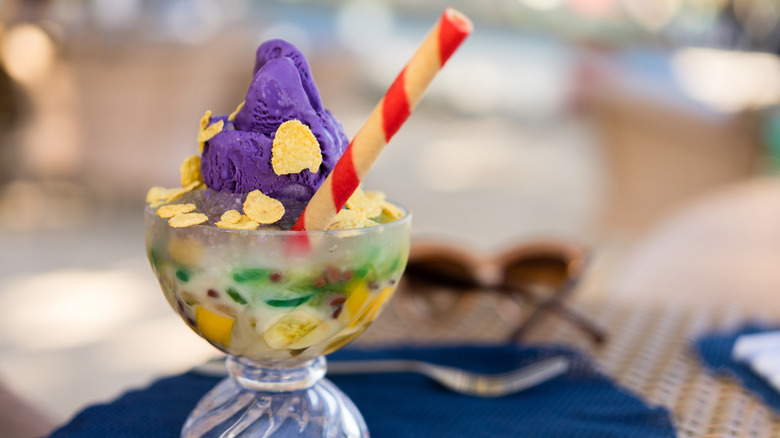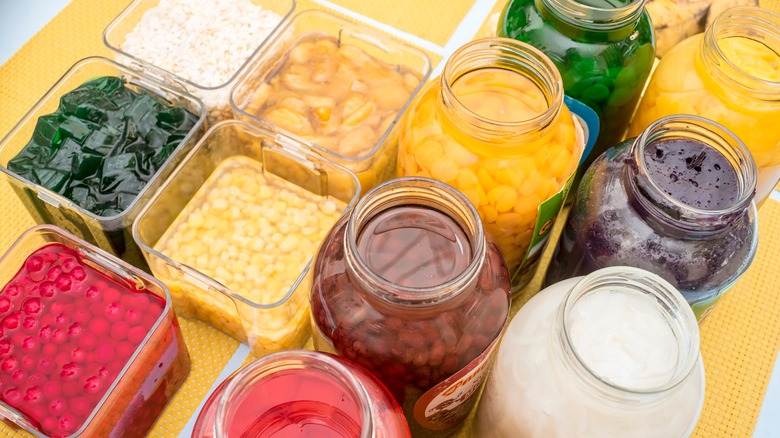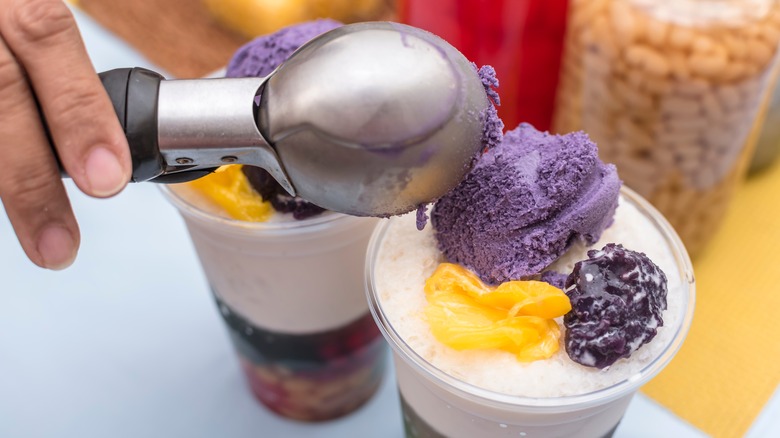What Is Halo-Halo And Where Is It Popular?
Halo-halo is but one of many mouthwatering desserts from around the world. Among those myriad sweet treats, shaved ice is a common component, especially for those desserts enjoyed where heat is most often abundant. Although halo-halo is not Japanese, history indicates that icy snacks from the Land of the Rising Sun are the dish's ancestors. Food historian Felice Prudente Sta. Maria once documented the Japanese mitsumame, which is an icy bean-based concoction, while historian Ambeth Ocampo noted the Japanese kakigori, which is a snow cone with condensed milk, sweetener, and syrup (via Filipiknow).
Either of those may have been the inspiration for halo-halo, yet Japan is not the only country responsible for influencing this dessert. The New York Times claims that halo-halo reflects several cultures, including for example American culinary customs. The dessert is therefore a melting pot — ironic given its frozen nature. What are the actual ingredients involved, though?
Mix-mix
As variable as the traditions that shaped it, halo-halo is not just one thing. Per Atlas Obscura, "halo-halo" is a Tagalog word that translates to "mix-mix," and that's essentially what it is: A mix of sweet ingredients. The components can vary, but as mentioned by Saveur, a classic recipe may include caramel custard, coconut jelly, corn, jackfruit, milk, plantains, purple yam, and red adzuki beans. Meanwhile, shaved ice is the consistent base.
This vibrant, chilly combo is often served by street vendors in plastic cups or at restaurants in elegant glasses. Some shops may also lay out the various ingredients so customers can put together their flavorful, multi-textured halo-halo on their own. As noted by Thrillist, it's fairly easy to make the dessert at home — it just takes a bit of time to gather ingredients, shave ice, and combine everything; you may also have to visit a specialty Asian market if you want to include some harder-to-find yet authentic toppings to mix in.
But where in particular did halo-halo originate and where is it still the most popular today?
Halo-halo was created in the Philippines
The treat hails specifically from the Philippines. As explained by the Philippine Daily Inquirer, the United States began exporting ice to the archipelago, which didn't previously have ice in plentiful supply, during the 1800s. This paved the way for frozen desserts there, and Japanese immigrants brought their own cold sweets to the Philippines sometime before World War II. Filipinos then iterated on these imports after many Japanese left the area in the post-war era, per Culture Trip, and thus the iconically Filipino halo-halo was made. Its popularity endured to modern times in the island nation, where it's now both a comfort food and a canvas for creativity.
Halo-halo is enjoyed in other countries, too, like Japan (no coincidence there). Variations known by other names also exist in other countries, especially those neighboring the Philippines. Plus, in the late 2010s, the Los Angeles Times reported that Filipino cuisine was experiencing a bit of a resurgence in the United States, halo-halo not excluded. However, westernized halo-halo hasn't always been well received. This mixed-up, shaved-ice treat may have multicultural roots, but it's worth looking to the Philippines for guidance when putting halo-halo together.


